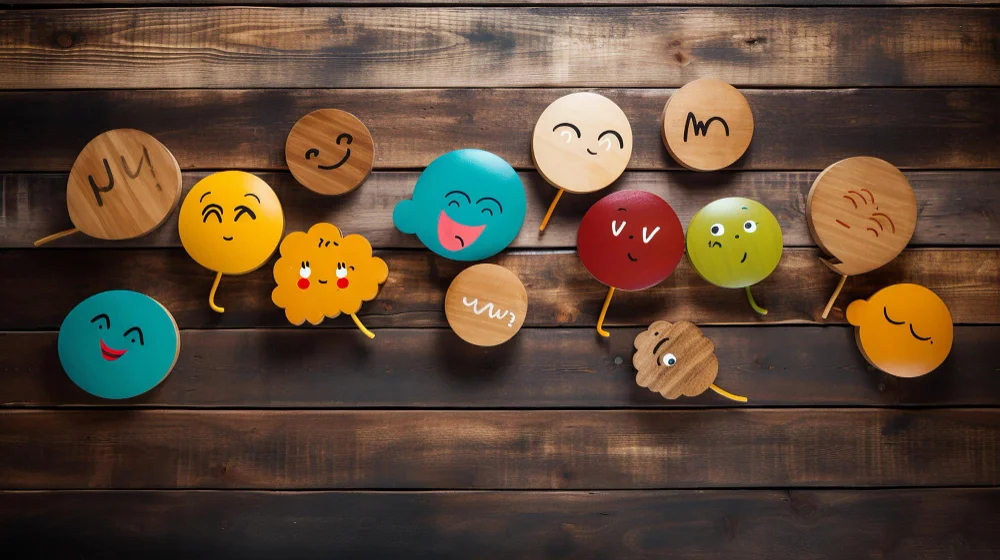How Was Your Day Feelings Check Out Clipart

Introduction
In today’s fast-paced world, taking a moment to reflect on our day and emotions has become increasingly important. The concept of a “feelings check” provides individuals with an opportunity to assess their emotional well-being and express their thoughts in a meaningful way. One popular and effective method for doing this is through the use of clipart designed to facilitate self-reflection. These visual tools offer a fun, engaging, and accessible way for people of all ages to communicate how they are feeling, whether in personal journals, classrooms, or workplaces. Clipart featuring a range of emotions allows individuals to identify their feelings easily, making emotional expression more approachable and relatable.
The Importance of Feelings Checks
Conducting a daily feelings check is a valuable practice that fosters self-awareness and emotional intelligence. It encourages individuals to take stock of their mental and emotional state, helping them recognize patterns in their moods and behaviors. Regular self-reflection can promote healthier emotional regulation, better decision-making, and improved communication with others. For educators, parents, and mental health professionals, implementing feelings checks using clipart provides a visual aid that simplifies the process, making it easier to identify emotions and encourage open dialogue. This practice can also reduce stress and anxiety by allowing individuals to process their emotions in a structured way.
How Clipart Enhances Emotional Expression
Clipart is a powerful tool that helps to break down barriers to emotional expression, especially for those who struggle with articulating their feelings through words. These visual representations, featuring a variety of facial expressions and moods, create a universal language that transcends age and cultural differences. Clipart can depict a range of emotions, from happiness and excitement to sadness and frustration, making it easier for individuals to pinpoint their current state of mind. Whether used in digital applications, printed worksheets, or interactive activities, clipart helps make the process of identifying and sharing emotions more engaging and less intimidating.
Applications in Different Settings
Feelings check clipart can be utilized in a variety of settings to encourage emotional well-being and support communication. In educational environments, teachers can use clipart to help students express how they feel about their learning experiences, social interactions, or personal challenges. In workplace settings, managers can incorporate feelings checks into team meetings to gauge employee morale and foster a supportive atmosphere. Additionally, clipart is a valuable resource for therapists and counselors, who can use it as a tool to facilitate discussions and help clients articulate their emotions more effectively. The versatility of clipart allows it to be adapted to different contexts and audiences, making it a valuable addition to emotional wellness initiatives.
Choosing the Right Clipart
When selecting clipart for feelings checks, it is important to consider factors such as diversity, inclusivity, and clarity. The clipart should feature a wide range of emotions that reflect different cultural backgrounds, age groups, and experiences. High-quality visuals with clear and expressive designs ensure that users can easily relate to and interpret the emotions depicted. Additionally, clipart sets that include customizable elements can provide greater flexibility, allowing users to personalize their feelings check experience to better suit their individual needs. Whether sourced from professional design platforms or free resources, choosing the right clipart enhances the effectiveness of the emotional check-in process.
Encouraging Consistent Use
For feelings checks to be truly beneficial, consistency is key. Encouraging individuals to engage in regular emotional check-ins using clipart can help normalize the practice of self-reflection and emotional expression. Incorporating it into daily routines, such as morning meetings, journaling exercises, or family discussions, can reinforce the habit and create a supportive environment where emotions are openly discussed. Providing a safe and non-judgmental space for sharing feelings further enhances the effectiveness of the practice, making individuals feel heard and validated in their experiences.
Conclusion
using clipart for feelings checks is an innovative and effective way to promote emotional well-being and self-awareness. Whether in schools, workplaces, or personal settings, visual tools offer an accessible and engaging means of expressing emotions and fostering meaningful conversations. By integrating clipart into daily routines and encouraging consistent use, individuals can develop a deeper understanding of their emotions and cultivate healthier relationships with themselves and others. As awareness of emotional health continues to grow, the role of feelings check clipart in promoting mental well-being becomes increasingly valuable.



